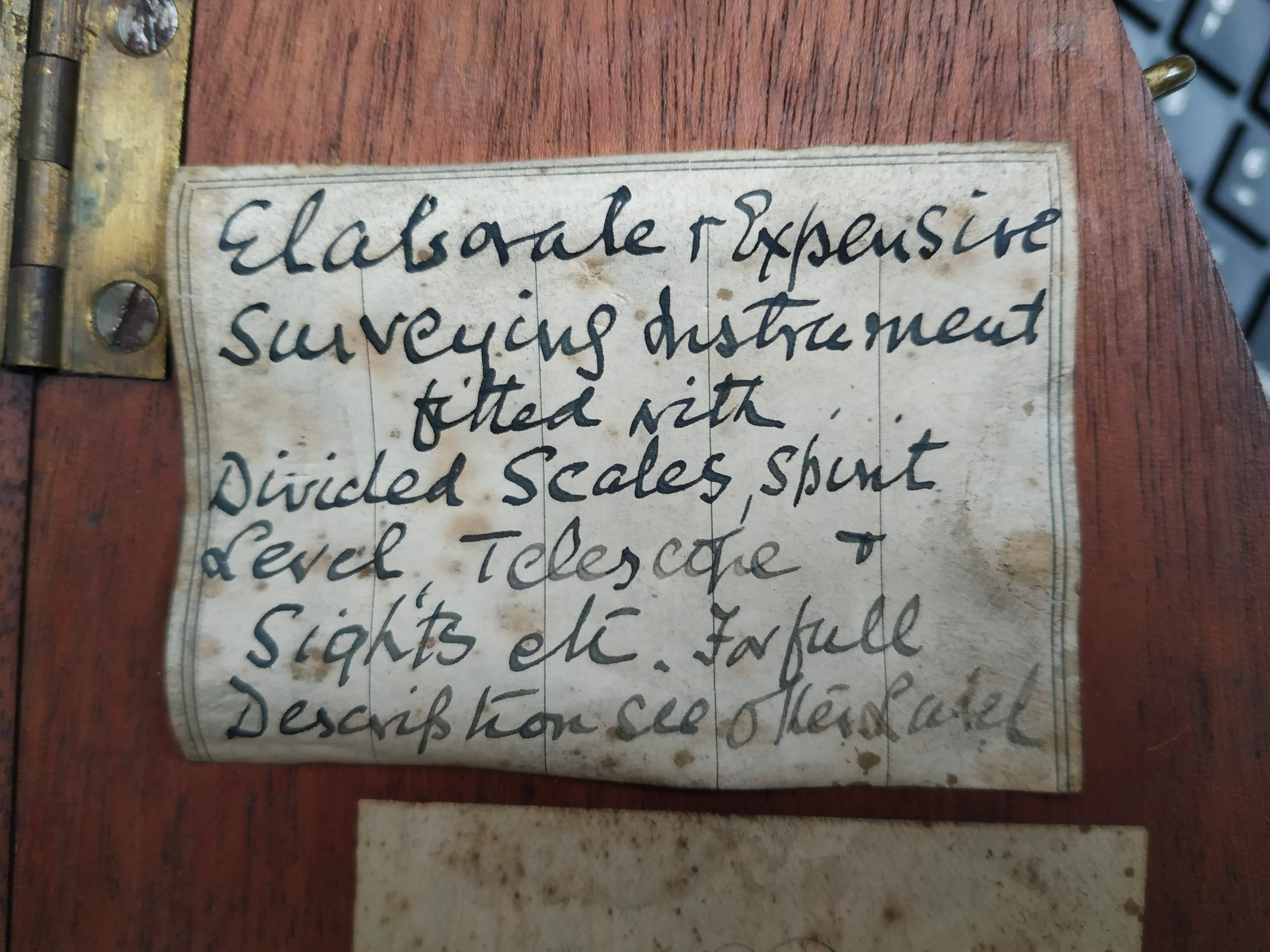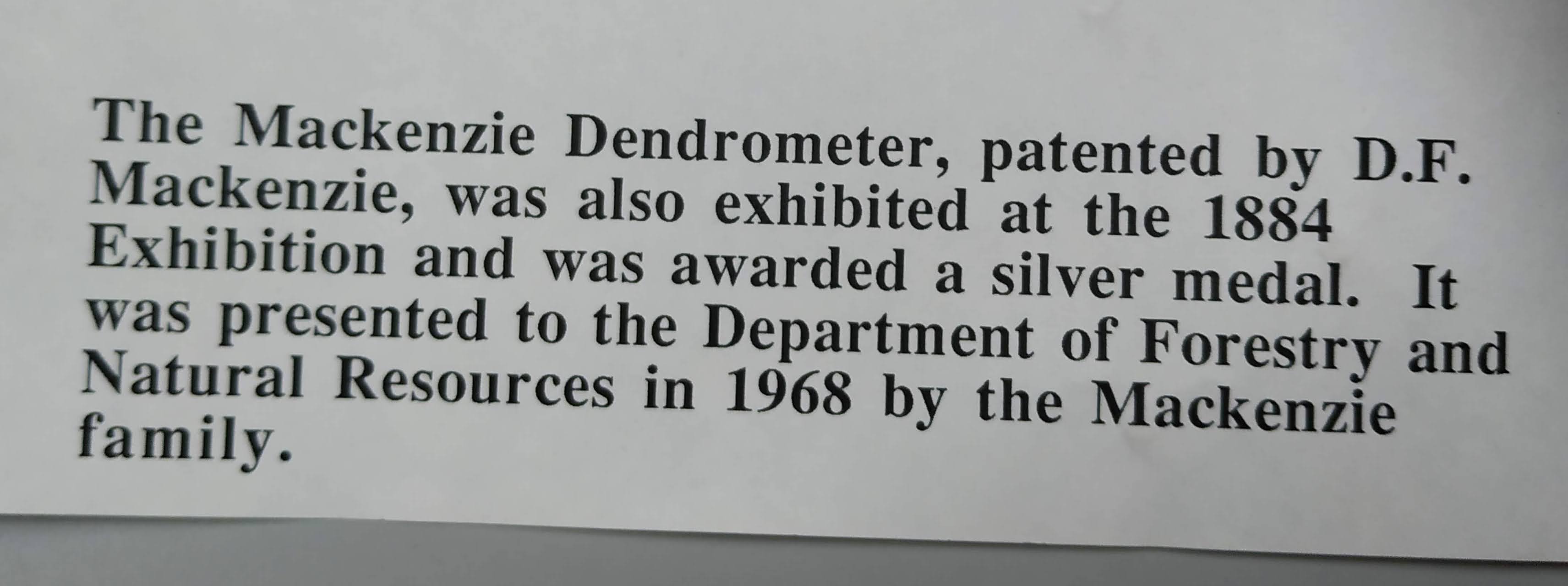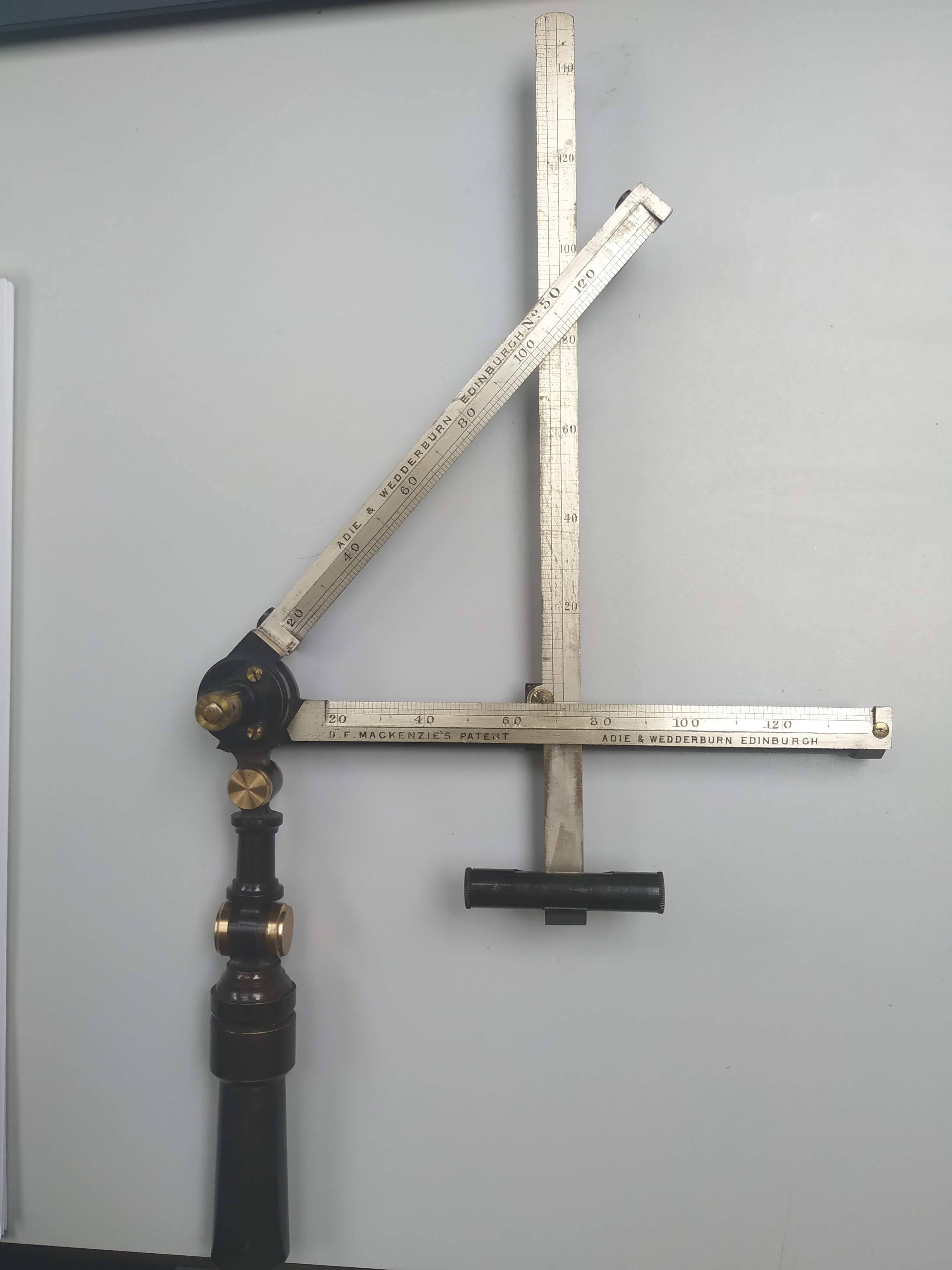TITLE: The Mackenzie Dendrometer
DATE: 2019-06-10
AUTHOR: John L. Godlee
====================================================================
My PhD supervisor was looking through old cupboards in our
department and found, among other things, a wooden box with some
sort of apparatus in it. They haven't had time to figure out what
it was used for so I took it away and did some research.
The box had a label stating that it was a "Dendrometer". All this
means in reality, without any more information, is that it was used
to measure trees. Not very helpful.

Inside the box there were a few handwritten labels. The first said:
Elaborate + expensive surveying instrument fitted with divided
scales, spirit level, telescope and sights etc. For full
description see other label.

The second label is really hard to read. This is the best I could
make of it:
This instrument by Adie & Wedderburn Edinburgh, marked "D. F.
Mackenzie Patent" consists of 2 equal levelled bars divided in ----
One bar is superposed on a telescope with a line across diameter
of object glass. The second bar at one end a folding bronzed
bracket ---- with eyehole, at the other end a rectangular folding
open bracket with centre perpendicular line. One bar swivels on a
bronzed circular fitting. The other bar is fixed. There is a third,
longer bar divided in ---- carrying a spirit level. This Bar with a
small needle pointer slides up and down the telescope ---- and
swivels to any angle. The swivelling fitting afor referred to, to
which the bars are attached fits on to a ---- swivelling bronzed
jolder (giving ---- in altitude, azimuth) to be held either in the
hand or to slide on to the end of any suitable stand, all in fitted
mahogany shaped case.

This label was printed and obviously written later, presumable
sometime after 1968. I doubt it's been used as a piece of
scientific apparatus since then:

The equipment inside the mahogany box looks like this:

It's basically a series of rulers with a spirit level attached to
one end, and a round handle attached to the bottom. Each of the
rulers has a set of wire sights, and one of the rulers has a
'telescope', essentially a tube with a small opening at one end and
a wire sight at the other.
I looked around online and the only helpful result I found was on
the Bonham's Auctioneers website. In 2009 they sold one of these
items for £360. They described it as:
[Bonham's Auctioneers website]:
https://www.bonhams.com/auctions/17616/lot/377/?category=list
Signed Adie & Wedderburn, Edinburgh, an instrument "for
expeditiously measuring heights and distances in a simple and
accurate manner", with three graduated limbs mounted on staff-head
with sights and bubble level, in shaped mahogany case with set of
printed instructions, 11in (28cm) long.
So if the instrument is used for measuring tree height, it might be
used similarly to a clinometer, using trigonometry to solve an
equation for the height of the tree as one side of the triangle. I
set the equipment up in the way I think it might work:

Here is a diagram that I hope explains how I think it should be
used. It draws on the "Principle of Similar Triangles", where
triangles can be described as 'similar' regardless of their size if
the angles are kept the same. You can enlarge a triangle while
maintaining its angles, so if you know the length of all sides in
the smaller triangle with certain angles, you can enlarge the
triangle any amount and as long as you know the length of one of
the bigger sides, in this case the horizontal distance to the tree,
you can be sure that the length of all the other sides was enlarged
by the same proportion. This helps to explain why the rulers each
have sights on them, as the idea is to line the sights and
therefore the ruler up with the top of the tree, or any other
object you would like to know the length of, or distance between.
["Principle of Similar Triangles"]:
https://www.mathopenref.com/similartriangles.html

I still don't know what the extra ruler is for. Maybe it attaches
to the main dendrometer somehow to extend its use, but I'm not sure.
In my work, I use a Nikon Forestry Pro Rangefinder to measure the
heights of trees. It uses very similar calculations to the
Mackenzie Dendrometer, except that the Rangefinder also has a
clinometer, eliminating the need to measure the vertical length y
in the smaller triangle, substituting it for an angle. It also
eliminates the need for measuring the height C between the ground
and the eye level of the researcher by taking three measurements,
at the top, horizontal middle, and base of the tree, effectively
constructing two triangles, one above and one below the horizontal
line, and adding together their opposite sides to get the total
tree height.
[Nikon Forestry Pro Rangefinder]:
https://www.youtube.com/watch?v=SAUL76gEIUo
